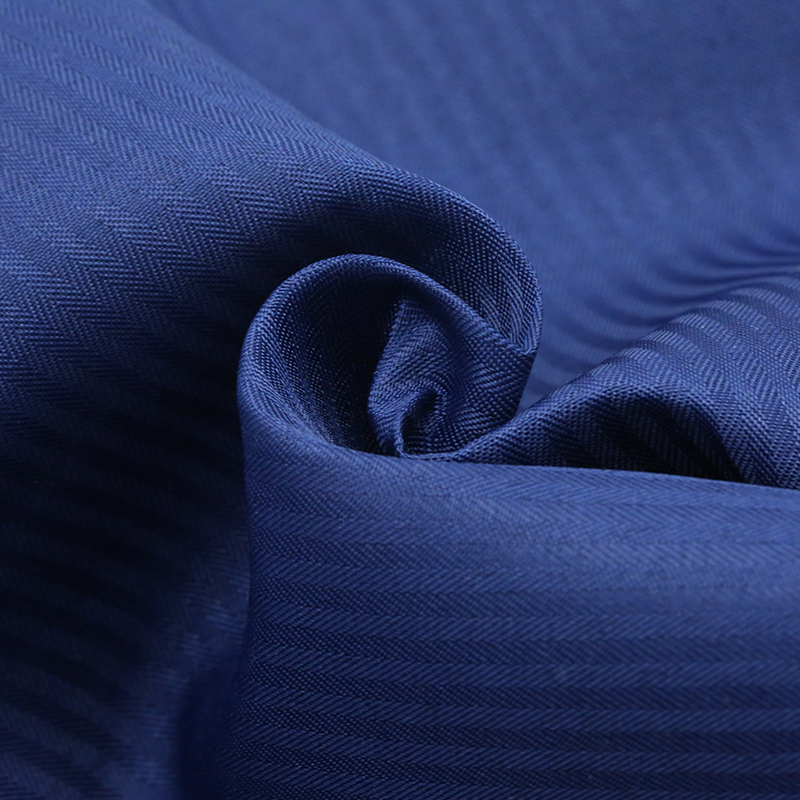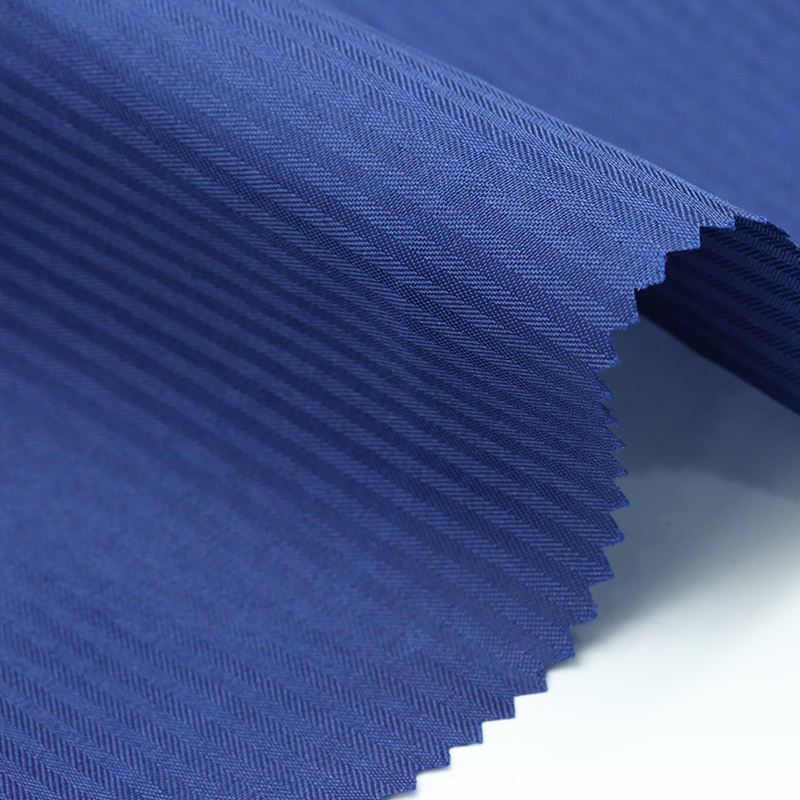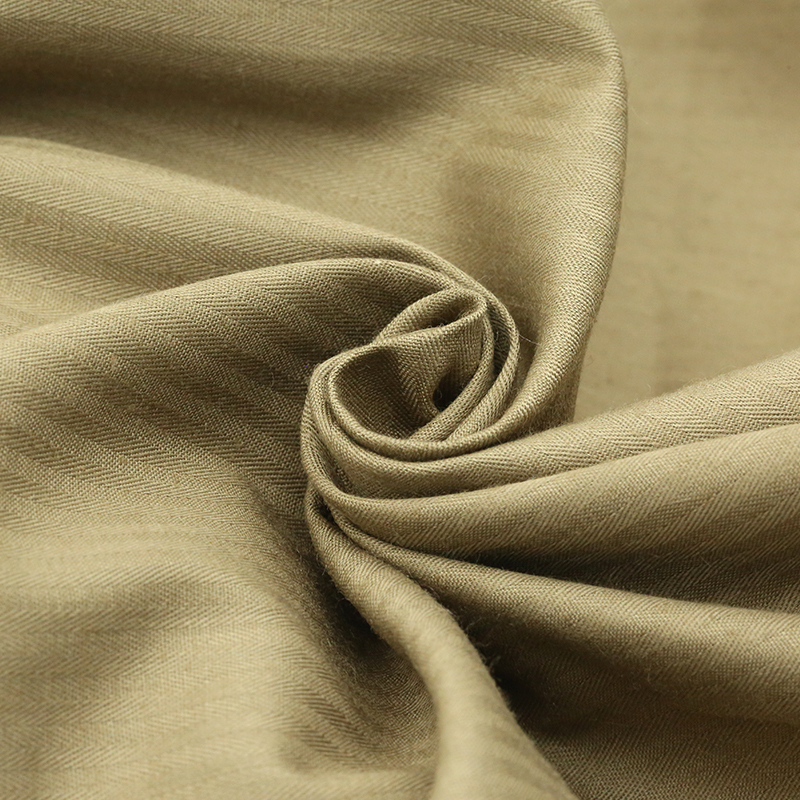Aug . 05, 2025 06:20
Back to list
Premium Polyester Cloth: Durable & Lightweight Fabric
Discover the world of polyester cloth, an advanced textile solution powering diverse industries. This comprehensive guide evaluates key aspects of polyester cloth—from its technical superiority, pricing, and specification comparisons to manufacturing processes, customization, third-party standards, and real-world applications. Featuring the 100% Polyester Lining Pocketing Fabric, this article employs industry data, specification sheets, product comparisons, expert FAQs, and application case studies to empower informed buying decisions.
1. Industry Overview: Polyester Cloth & Market Trends
The global polyester cloth market is expected to reach $120.7 billion by 2026, growing at a CAGR of 6.1%. This rapid growth is driven by the demand for polyester clothing, cost-efficient production, and notable material performance.
Key related segments:
Sources: Textile World, Statista, Textile Today 2023 reports
Key related segments:
- 100 polyester clothes & clothing—widely adopted in fashion, uniforms, and functional apparel due to affordable polyester cloth price and ease of dyeing.
- Cotton polyester cloth—blends deliver breathability coupled with strength and better wrinkle resistance.
- Emerging focus on sustainability, recyclability, and certifications (e.g., GRS, OEKO-TEX).
| Parameter | Polyester Cloth | Cotton | Nylon | Cotton Polyester Cloth |
|---|---|---|---|---|
| Fiber Strength (g/denier) | 4.2 – 5.8 | 2.8 – 3.7 | 4.5 – 6.4 | 3.3 – 4.1 |
| Moisture Regain (%) | 0.4 | 8.5 | 4.5 | 5.2 |
| Color Fastness (rating) | 4-5 | 3-4 | 4-5 | 3-4 |
| Price per Meter (USD, avg.) | 0.70 - 2.50 | 1.30 - 3.80 | 1.80 - 5.10 | 1.10 - 3.10 |
| Tear Strength (N) | 15 – 24 | 8 – 14 | 18 – 32 | 10 – 17 |
| Eco-certification Potential | Recyclable, GRS, OEKO-TEX | Organic Possible | GRS/Blended | GRS/Organic Option |

2. What Makes Polyester Cloth Superior? | Structure, Material, and Specification Insights
Polyester cloth is a synthetic textile woven from polyethylene terephthalate (PET) fibers, which are engineered for durability and performance.
- Structure: Plain, twill, satin, or dobby weaves tailored for specific applications.
- Material: 100% PET (as in 100 polyester clothes) or blended (e.g., cotton polyester cloth).
- Surface Treatments: Water-repellent, anti-UV, anti-static, flame-retardant options.
- Optimized for linings, pocketing, uniform, and functional/interior textiles.
- Excellent dimensional and color stability, shrink-resistant, and machine-wash friendly.
- Certified to leading standards: ISO 9001, OEKO-TEX® Standard 100.
- Competitive polyester cloth price: From $0.78/meter (bulk) [see latest deals]
“In controlled lab tests, high-quality polyester cloth demonstrated 4.9–5.7 g/denier breaking strength and retained 97% color fastness after 300 washes, outperforming most cotton blends.”
— Textile Today 2023, Product Performance Review
— Textile Today 2023, Product Performance Review
3. Manufacturing Process: Polyester Cloth
Crafting polyester cloth—especially 100% polyester cloth for high-end lining pocketing—demands both precision and innovation. Below is a detailed illustration of the typical process:



Testing standard reference: ISO 105 C06 (Color fastness), ISO 13934-1 (Tensile Strength).

1. Polymerization
PET synthesis from purified terephthalic acid & ethylene glycol

2. Spinning & Drawing
Extruded filaments drawn to boost orientation & strength

3. Weaving & Finishing
Weave into cloth, dye, apply finishing (softening, anti-pilling, etc.)
| Composition | 100% Polyester Microfiber Filament | Weight | 55–65 GSM |
|---|---|---|---|
| Weave | Plain / Twill / Dobby | Width | 150–160 cm |
| Yarn Count | 75D×150D, 45D×45D, or customized | Color Fastness | Grade 4–5 (ISO 105 C06) |
| Finishing | Soft, Antistatic, Waterproof, FR (optional) | Certifications | ISO 9001, OEKO-TEX, Reach |
4. Data Visualization: Technical Parameter Comparison
Visualization data based on 2023 supplier & test-lab reports.
• Tensile tests: ISO 13934-1 | Shrinkage/fastness: ISO 105 C06 | Abrasion: Martindale ISO 12947.
• Tensile tests: ISO 13934-1 | Shrinkage/fastness: ISO 105 C06 | Abrasion: Martindale ISO 12947.
5. Suppliers and Customization—Polyester Cloth Price, Lead Times & Vendor Comparison
| Supplier | Product Range | MOQ (m) | Typical Price/m (USD) | Certifications | Global Clients | Lead Time (days) |
|---|---|---|---|---|---|---|
| Jiexiang Textile | 100% Polyester Lining, Pocketing, Uniform, FR, Antistatic | 1000 | 0.78–1.19 | ISO9001, OEKO-TEX | Aritzia, Li&Fung | 18–22 |
| Huzhou Manufacturer | Cotton Polyester, Microfiber, Jacquard | 1500 | 0.95–2.20 | ISO, GRS | VF Corp, Esprit | 21–28 |
| Hengli Group | 100 Poly, Nylon, Blends | 2500 | 1.05–1.85 | ISO, OEKO-TEX | Gap, Shenzhou | 19–25 |
| Sunshine Textile | Bedding, Lining, Home Textile | 2000 | 0.98–1.45 | SGS, OEKO-TEX | Calvin Klein, Walmart | 22–30 |
Custom Solutions:
- Wide selection of weights, finishes (e.g., flame retardant, water repellent, anti-static).
- OEM dyeing, digital printing, pattern/weave selection (plain, twill, jacquard).
- Support for small-batch prototyping and rapid sample shipping (72 hours possible).
- Certified as per ISO9001:2015, with third-party test reports available on request.
6. Application Scenarios: Industry Use Cases & Performance Validation
A. Uniform & Workwear Manufacturer—Shanghai, China
- Requirement: Durable, lightweight, colorfast lining for 50,000 police uniforms.
- Solution: Used 100% Polyester Lining Pocketing Fabric (plain weave, 60gsm, Grade 5 color fastness)
- Outcome: After 1 year (350 machine washes), >97% integrity,

B. Technical Textiles (Pipe Lining, Construction, Protective Barriers)
- Requirement: Chemical resistance, waterproofing, energy efficiency in field applications.
- Fabrication Method: Utilized polyester cloth material laminated with PU coating, 150D/300D, anti-aging treatment.
- Testing: Lab-tested—chemical soak (24hr), tensile test, accelerated aging (ISO 4892-2).
- Advantages: 44% longer service life vs. conventional blends; 12.8% higher resistance to corrosion and UV degradation.
C. Fashion & Functional Apparel—Global Brand Collaboration
- Application: Lining for suits, dresses, jackets, children's school uniforms, and accessories.
- Feedback: End-users highlighted lighter weight, smoother feel, and stain resistance of polyester clothing over previous cotton lining.
- Awarded: "Best Innovation in Lining Materials, 2022" (by Asia Apparel Forum)

7. Polyester Cloth FAQ — Essential Technical Answers
1. What is the difference between 100% polyester cloth and cotton polyester cloth?
100% polyester cloth is made entirely of synthetic PET fibers, yielding superior durability, color fastness, and wrinkle resistance, while cotton polyester blends incorporate natural cotton for enhanced breathability and moisture comfort at the expense of lower strength and often higher cost.
2. What technical standards does your polyester cloth conform to?
Products meet ISO 9001 (quality management), OEKO-TEX® Standard 100 (non-toxicity), and specific EN/ANSI standards for flame retardant/antistatic finishes. Dyeing and color fastness are verified via ISO 105 C06.
3. What are typical GSM and widths available for 100 polyester clothing linings?
Most common are 55–65 GSM for spring/summer and 75–90 GSM for winter, with widths 150–160cm standard. Heavier options (up to 120cm GSM) or custom widths (up to 280cm) are available per project requirements.
4. Do you offer third-party test reports or certifications for your materials?
Yes, on request we provide test reports by SGS, Intertek, or local CNAS-accredited labs, including color fastness, formaldehyde, anti-pilling, and tensile strength testing.
5. How do you ensure long service life for polyester cloth in challenging environments?
Enhanced by proprietary finishes (e.g., anti-microbial, UV-resistant), strict yarn quality control, and adherence to ISO production and inspection standards. Avg. service life in apparel: 4–7 years; for technical textiles: 5–10 years depending on use.
6. What is your production lead time and shipment policy?
Lead time averages 18–22 days for volumes <20,000m. Rush samples delivered in 72 hours. Worldwide shipping (DDP, FOB, CIF).
7. What warranty and after-sales support do you provide?
Warranty: 12 months from shipment. Free replacements for manufacturing defects (standard QC reference: ISO 2859-1:2017). Full technical consultation, design optimization, and quick response for all post-sales issues.
8. Trust, Certification & Support: Why Choose Certified Polyester Cloth?
- Industry Certification: Strict compliance with ISO, OEKO-TEX®—guaranteeing product safety, reliability, and suitability for sensitive (e.g., skin contact) applications.
- Vendor Experience: Over 15 years’ industry experience; products supplied to Fortune 500 apparel and technical textile brands.
- Support Options: End-to-end solution design, rapid prototyping, and international after-sales service.
- Transparent Testing: All batches individually tested for color fastness, shrinkage, tensile/Abrasion/FR—3rd-party reports supplied.
- Traceable Production: Full lot traceability and batch quality records available upon request.
Delivery & Warranty:
- Standard production: 18–22 days lead time
- Strict AQL-based inspection, digital QC reports
- 1-year quality guarantee; 24/7 technical support
Conclusion & Further Reading
In summary, polyester cloth—particularly 100% Polyester Lining Pocketing Fabric—stands out for its technical reliability, versatility, cost-efficiency, and compliance with strict industry standards. As textile innovation continues to progress, demand for 100 polyester clothing and specialized cloth materials (e.g., anti-static, flame retardant, or customized blends) is expected to expand across apparel, industrial, and technical textile sectors.
For professional evaluations, emerging market trends, buyer tips, and expert technical advice, please refer to:
For professional evaluations, emerging market trends, buyer tips, and expert technical advice, please refer to:
- Textile World — Polyester: The Fiber That Took Over The World
- Textile Today — Polyester Cloth Market & Analysis
- ResearchGate: Polyester Fibers Market Analysis 2023-2026
- Apparel Resources—Latest Polyester Industry News
References: Textile World 2023, Textile Today, ISO (www.iso.org), OEKO-TEX (www.oeko-tex.com), ResearchGate, CNAS, Apparel Resources.
Further technical FAQ available at: Textile Forum: Polyester Cloth Material Techboard
Further technical FAQ available at: Textile Forum: Polyester Cloth Material Techboard
Latest news
-
Hot Sale 180D CEY Crepe AirFlow Woven Fabric 100% PolyesterNewsNov.14,2025
-
Twill TR Fabric for Elastic Suits & Trousers, ShrinkproofNewsNov.14,2025
-
Grey Muslin Fabric — Soft, Durable, Bulk & Custom SizesNewsNov.14,2025
-
CEY Crepe Fabric, Plain Woven Airflow Polyester TextileNewsNov.14,2025
-
Wholesale Custom TR Fabric 80/20 Soft Arabic Thobe FabricNewsNov.14,2025
-
Polyester Cloth - Durable, Wrinkle-Resistant, Factory DirectNewsNov.05,2025
-
TR 80/20 Poly Viscose Twill Thobe & Suiting Fabric Easy-CareNewsNov.05,2025











